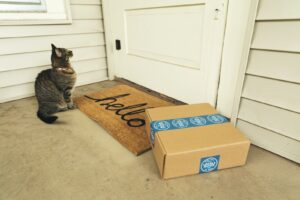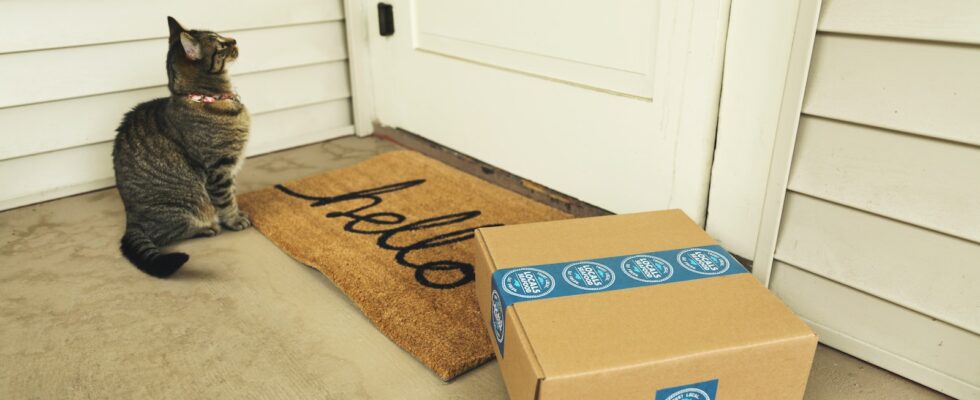 A decade ago, Amazon rolled out one-hour delivery in New York. While they’ve since scaled that back to a two-hour service in certain major cities, the reality is that for many metro-based consumers around the world, delivery is a matter of hours, not days. If you order online at breakfast, you’ll get your goods before lunch.
A decade ago, Amazon rolled out one-hour delivery in New York. While they’ve since scaled that back to a two-hour service in certain major cities, the reality is that for many metro-based consumers around the world, delivery is a matter of hours, not days. If you order online at breakfast, you’ll get your goods before lunch.
It’s an area where Australia is struggling to catch up. Customers are increasingly expecting same-day or even one-hour delivery, but the fulfilment infrastructure remains embryonic. Research by Baymard Institute shows that 69 per cent of all e-commerce visitors abandon their shopping carts – finding that delivery cost is a major deterrent to a final sale. Retailers are under huge pressure to offer faster delivery times and fix the “last mile” problem, but face a range of challenges:
- High delivery cost: the last mile is the most expensive part of the order-fulfilment process. Storage, fuel, labour, idling and maintenance can account for over 50 per cent of the total cost of shipping and delivery
- Inefficiency in fulfilment given its complexity: the last-mile delivery process can waste time, which further adds to costs and cuts into profit margins
- Final stage unreliability: individual couriers face a high level of unpredictability, from uncertain routes to customers unavailable to receive consignments
- Transparency issues: customers want fast delivery and full tracking ability, being able to check status in real time
- High cost of returns: customer returns, failed deliveries and damaged products, which account for 20-30 per cent of sales, cost businesses 66 per cent of the item’s original price
One solution is for brands to partner with third-party delivery providers or even acquire them.
Woolworths recently bought collapsed grocery delivery startup Milkrun, gaining its customer base and delivery infrastructure. Coles is partnering with UberEats in metro areas to offer two-hour grocery deliveries. Telstra partnered with Zoom2u for two-hour deliveries.
Driven by soaring demand, Australia’s last-mile delivery sector is tipped for strong growth. Mordor Intelligence estimates a CAGR of 10.55 per cent from 2022 to 2027. Delivery companies such as Drive Yello, Drivers2u, Sendle and Sherpa continue to spring up, following the Uber model of using private drivers and cyclists as couriers, giving them a huge network.
The market is getting competitive. Sendle recently revealed its new Digital Partner Program (DPP) to help shipping platforms and e-commerce companies diversify carriers and save cost and time, aiming to offer more favourable terms than its competitors.
Mergers and consolidations are also increasing. Drive Yello already merged with the cafe ordering app Hey You and forecasts handling $100 million in transactions for the 2023 financial year, with 5000 active vendors, 100,000 customers and 10 million orders.
Retailers, then, have a lot of options. But to fix the last mile there’s still a lot of work ahead.
1. Back-end operations
While front-end e-commerce capabilities are increasingly fast and seamless, most retailers are still struggling with logistical issues for inventory visibility and supply chain operations. Outdated technology is no longer up to the task.
2. Smart warehousing
Retailers must establish storage warehouses in areas where they have a significant customer base. This will typically mean urban centres where businesses can meet shorter delivery time windows. Some companies may convert portions of their stores completely into fulfilment centres.
3. Crowdsourcing
Demand for last-mile delivery spikes during specific periods, such as the holiday season or sales. This creates scalability issues. To address fluctuations in demand and ensure uninterrupted service, companies can crowdsource fleets and drivers. This reduces costs while increasing flexibility.
4. Route optimisation
Couriers need to use the shortest and most cost-effective route for order deliveries. AI and machine learning can help monitor road conditions (congestion, closures, weather patterns) and update routes in real-time.
5. Transparency and traceability
Smart technology solutions like GPS and RFID tags can be used to track and send automated notifications of the delivery driver and order package’s location. Customers can talk to the driver directly and ensure they are available at the time and place of delivery, avoiding missed or wrongly directed deliveries.
Why Amazon is still ahead of the curve
Delivery pioneers such as Amazon have long adopted these tactics. Amazon introduced “Amazon Lockers” for customer pickup, meaning deliveries can be made to much more easily accessible commercial locations. This also benefits customers as they don’t need to be home to ensure safe delivery.
For customers that do need doorstep delivery, Amazon has an “Amazon Key” service that allows packages to be placed in customers’ garages with my-enabled openers. This service has also been extended to some apartment buildings and gated communities, enabling authorised drivers to enter secure premises.
Amazon is also dabbling in autonomous deliveries. While services such as drone deliveries remain limited in Australia and mostly confined to rural areas, Amazon’s robotic picking and self-driving services may eventually be more viable.
By John Costello, chief technology officer at Publicis Sapient
This article was first published by Inside Retail
